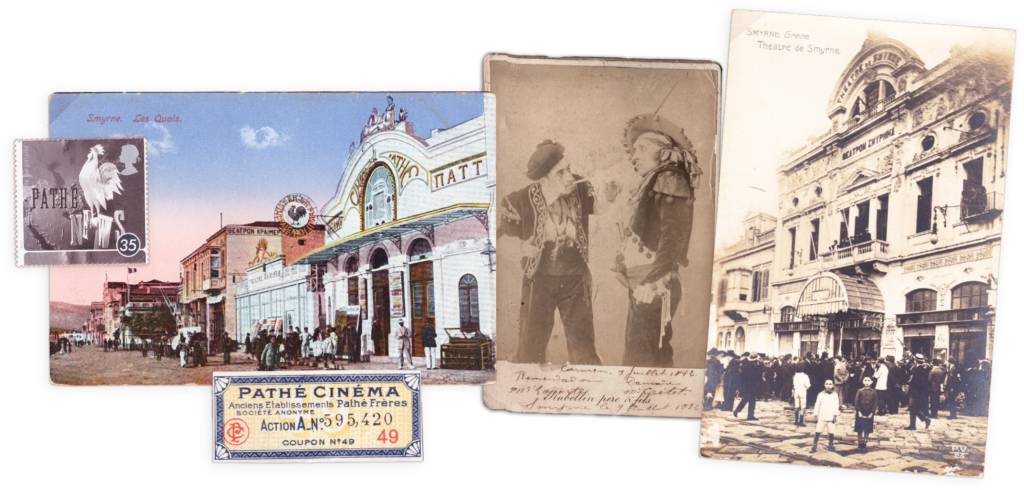As trade flourished, the number of European merchants residing in İzmir increased daily, and over time, the city began hosting a considerable population from Europe. According to records from the early 20th century, between 50.000 and 70.000 foreigners lived in the city. As a natural consequence of the high European population, İzmir met Western culture and arts.
According to Metin And, a renowned scholar in theater history, theater was introduced to İzmir before reaching İstanbul, with the first play being performed in the second half of the 17th century at the French consulate building. From the second half of the 18th century onward, it is known that the city had halls built specifically for theater performances and other stage productions.
As technological advancements accelerated trade, they also facilitated cultural exchange between societies. Particularly from the mid-19th century onward, the growth in Western Anatolia’s trade centered in İzmir and the resulting wealth accumulated by European merchants can be observed through the construction of theater and cinema halls in Kordon Promenade. The increasing popularity of Western art forms such as theater, opera, and cinema, along with the regular arrival of European touring performances, not only demonstrates the interest of İzmir’s residents in these art forms but also reflects the dynamic nature of cultural exchange.
Despite being only two stories tall, the Smyrna Theater was one of the tallest buildings in Kordon. With its facade adorned with decorations and reliefs inspired by Ancient Greek art, the theater had a striking appearance. The building had a seating capacity of 784 but was destroyed in the Great İzmir Fire of 1922. In addition to this venue, theatrical performances were also held in open-air spaces or halls of well-known entertainment venues such as Sporting Club and Elhamra Brasserie (Alambra Brasserie).
The world’s first motion picture was screened in Paris in 1895, while the first film screening in İzmir took place in 1896. The fact that cinema reached İzmir within just a year from the other side of the world is a significant indicator of the city’s dynamic cultural and artistic life at the time. In the following years, many cafés and clubs in Kordon Promenade hosted film screenings. However, a dedicated cinema hall named Pathé Cinema was opened in 1909. This cinema was part of a chain established by the French Pathé brothers and served as the İzmir branch of the network. During the same period, cinemas with the Pathé name were also opened in many cities across Europe as well as in İstanbul.
At the end of the 19th century and the beginning of the 20th century, many merchants and travelers who came to İzmir from Europe wrote about the glittering and vibrant social life of Kordon Promenade in their memoirs. Ephemera materials from that period also reveal the diversity of theater and opera performances as well as the widespread interest in cinema. In this sense, the Frenk Mahallesi (Foreigners Neighborhood) of the time was like a branch of Europe in İzmir, an extension of the Western world within the city.
